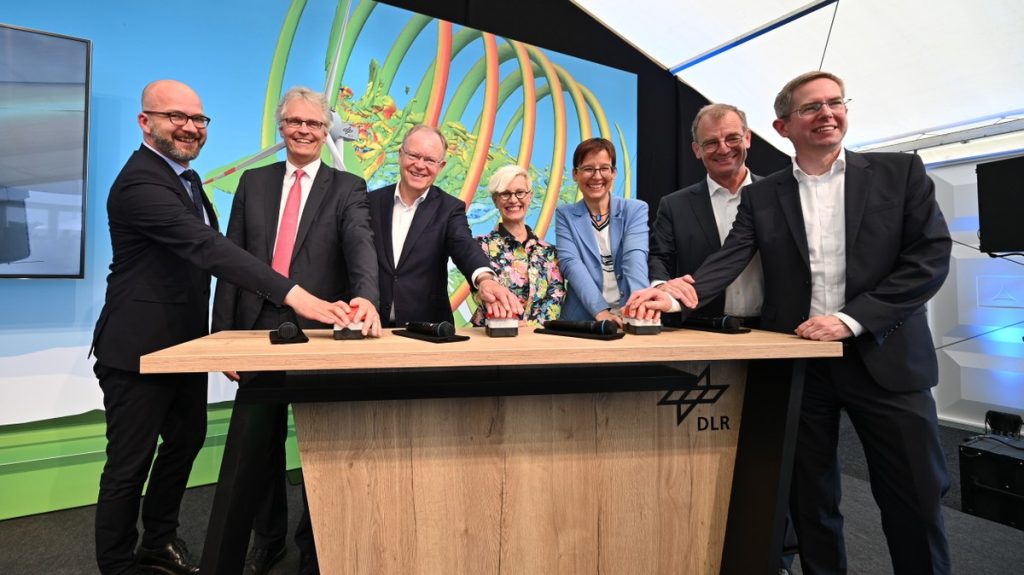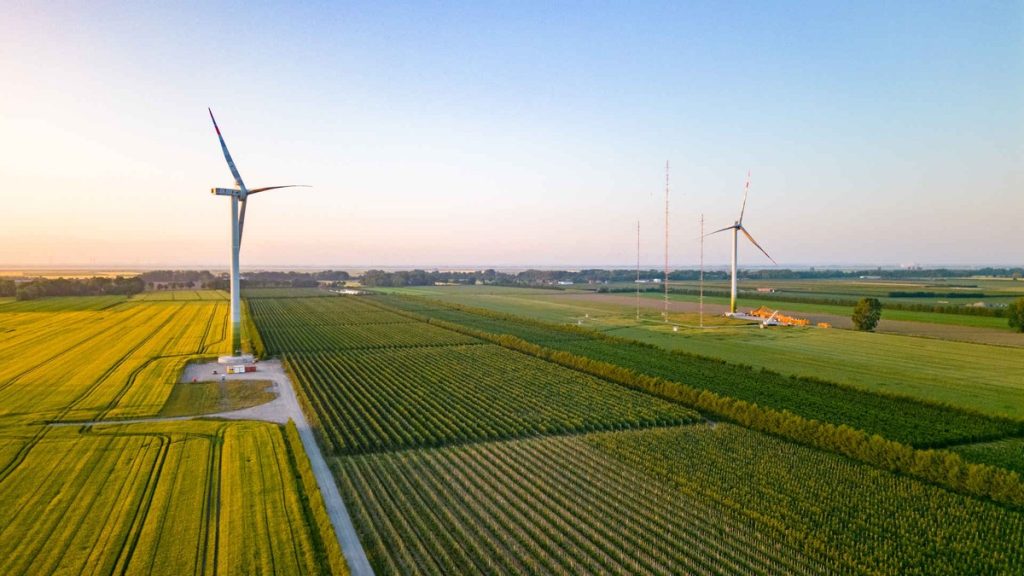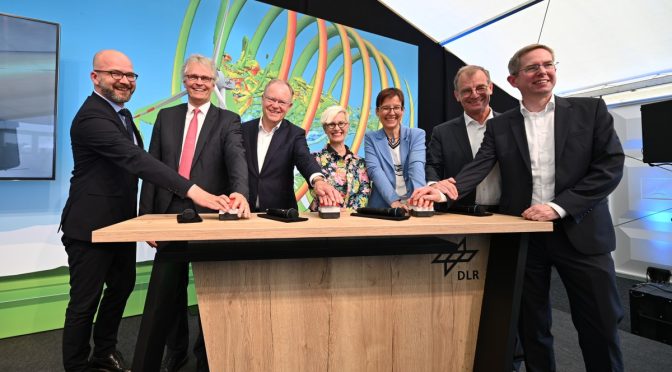With its wind energy research farm, the German Aerospace Center (Deutsches Zentrum fuer Luft- und Raumfahrt; DLR) has a globally unique large-scale research facility in Krummendeich, near the mouth of the River Elbe. The Wind Validation (WiValdi) facility enables full-scale research with an unprecedented level of detail under real environmental conditions. The goal is to better understand wind energy with all its influencing factors. In collaboration with commercial enterprises and other research institutions, DLR aims to develop technologies that will increase the efficiency and cost-effectiveness of wind turbines, reduce noise emissions, and thus also promote the acceptance of wind energy.

On 15 August 2023, DLR celebrated the opening of the research farm in Krummendeich with guests from government, administration, industry and scientific research. After a construction period of approximately two years, commissioning is now fully under way. During the trial operations, WiValdi has already fed electricity into the grid, research projects have started, and the first exciting data have been successfully collected. The DLR wind energy research farm is funded by the German Federal Ministry for Economic Affairs and Climate Action (Bundesministerium fuer Wirtschaft und Klimaschutz; BMWK) and the Lower Saxony Ministry of Science and Culture (Niedersaechsisches Ministerium fuer Wissenschaft und Kultur). Approximately 50 million euro are being invested in the construction.
“Wind energy still has great technological potential. With the DLR WiValdi research farm, we want to further develop this potential, transfer the results into application and thus strengthen the German and European wind power industry,” explained Anke Kaysser-Pyzalla, Chair of the DLR Executive Board. “Together with our partners in industry and scientific research, we are working on solutions to make wind energy even more efficient and cost-effective, and thus to further promote the energy transition for the economy and society,” Kaysser-Pyzalla continued. “Special thanks,” the DLR Executive Board Chair emphasised, “go to the turbine manufacturer Enercon, ForWind – the Center for Wind Energy Research of the Universities of Oldenburg, Hanover and Bremen – and the Fraunhofer Institute for Wind Energy Systems (IWES).”

“Lower Saxony is the number one state for wind energy in Germany. The WiValdi research farm, to which the state of Lower Saxony is contributing 16.4 million euro, demonstrates this once again,” said Stephan Weil, Minister President of Lower Saxony. “With WiValdi as a flagship project for energy research, we are implementing another important building block for a successful energy transition. WiValdi is an excellent example of how we can use the opportunities offered by renewable energies to protect our environment with innovation, advance our economy and create jobs. I would like to thank all those involved – above all, DLR and its partners, ForWind and Fraunhofer IWES from the Research Alliance Wind Energy, for their future-oriented commitment. I wish WiValdi every success as well as many exciting insights into shaping our future energy policy.”
Everything in a line – the special configuration of WiValdi
The layout and configuration of the DLR research park are unique. Two state-of-the-art wind turbines from the German manufacturer Enercon, each with a rated power of 4.26 megawatts, and several measurement masts are positioned one behind the other, facing in the direction of the prevailing wind. The blade tips of the two wind turbines reach 150 metres above ground level. WiValdi is equipped with over 2000 sensors that measure temperature, humidity, wind speed, pressures and even the smallest deformations of the rotor blades. The research farm thus generates extensive datasets for scientific research. These will serve as the basis for developing intelligent wind turbines, among other things.
Advancing wind energy – using land more efficiently, increasing cost effectiveness and acceptance
The measurement masts also include a highly instrumented measurement array between the first and second wind turbines. The array connects three measurement masts, two with a height of 100 metres at the edges of the array and one with a height of 150 metres in the centre. The array carries a multitude of sensors whose unique arrangement was developed specifically for this research by ForWind – the Center for Wind Energy Research of the Universities of Oldenburg, Hanover and Bremen. These sensors determine exactly how the wind is affected by the first turbine before it reaches the second one. The second turbine is often in the wake of the first and has to cope with very turbulent air. Under commercial conditions, this is unfavourable, but it is precisely this configuration that interests the researchers. This is because with a massive expansion of wind energy, such arrangements will soon be unavoidable. That is why they are already investigating what happens in this configuration now and for the first time at full scale and with a previously unavailable level of detail. They will then have a better idea of how to position turbines more closely in the future, how to make better use of the available space and how to achieve the highest possible output that meets the needs of the power grid.
The WiValdi research farm is not yet complete. A third, slightly smaller wind turbine and another measurement mast are expected to be completed during 2024. The planning work, tenders and preparations are already underway.


